I grew up proud of my American family with Northern England and Scotland roots. The Woods migrated from England in the 1600s and settled in Virginia. They married other English and Scot emigrants and fought the British in the American Revolution. Eventually the family moved to the southern Michigan rural area around Adrian and Hillsdale. They fought for the North in the Civil War, World War One, and World War Two. On my mother’s side her father came from Scotland and her mother’s family were English-Swiss that settled in Canada in the 1600’s.
What I didn’t know until much later was that the family first settled as farmers in the Appalachia mountain area of western Virginia. They were poor English and Scot trying to escape oppression. English and Scot royalty and aristocrats evicted poor farmers off their land for sheep grazing for the wool industry. Displaced English, Scots, Welsh, and Irish were forced to travel to the New World, often as indentured servants, a polite word for slavery.
Appalachian people are predominantly of English-Scot descent and are proud, independent, devout, resourceful, and anti-authoritarian for good reason – their values, integrity, resourcefulness, and inventiveness overcomes the typical prejudice, snobbery, and discrimination about Appalachian stereotypes. Detailed in Tennessee, West Virginia, and Kentucky university studies, most Appalachian people opposed the big plantation owners and were against slavery; many fought with the North against the Southern slave owners.
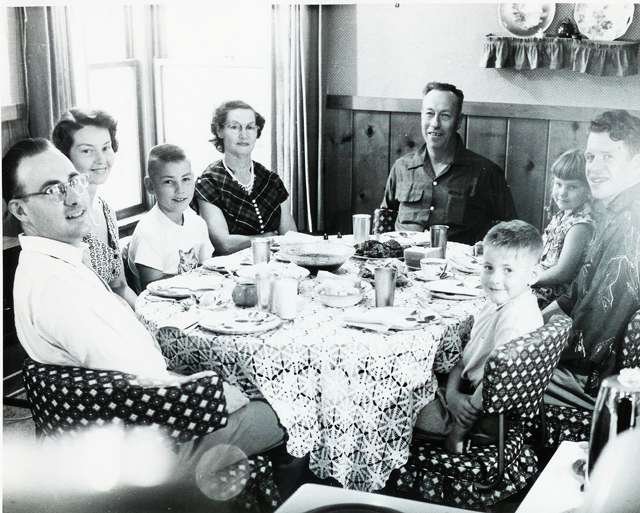
Appalachian Cuisine
Our immediate family, grandparents, aunts, and uncles, grew up on traditional English-Scot and Appalachian food recipes. We canned and pickled food, made homemade bread, preserves, pickles, sauces, pies, biscuits, and beverages. We caught fish and hunted wild birds for food. A vegetable garden and fruit trees provided a harvest. We bought from farmers at roadside stands and the farmer’s market. Sunday church was always followed by a trip to grandma’s for a huge feast with our relatives. Life was good.
Southern Appalachian food is a distinct regional cuisine that is different than Lowland, Coastal, Soul, Bayou, and Cajun cuisines of the South. The Mountain recipes of the region have been derived from Cherokee Native-American and Scottish-English ancestry, which were then forged by the rugged mountain wilderness.
In the past, the region’s food consisted primarily of pork, poultry, wild game, corn, apples, berries, pinto beans, squash, cabbage, leafy greens, potatoes, dairy, teas, cider, and coffee.
Subsistence Farming
Appalachia had remained isolated with limited trade due to travel distances, poor roads, and mountain terrain. Therefore most food was homegrown, hunted, or foraged. Men would get jobs on the railroad, mining, and lumbering but still grew food. There was insufficient pasterage for beef cattle, so pork, poultry, wild game, and fresh water fishing provided protein. It was a community tradition to share food with those who could not provide, such as single mothers, widows, handicapped, and the elderly. Farmers would lend milk cows to mothers if they had no cow.
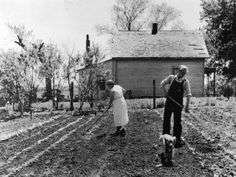

Almost every family had a garden to grow corn, beans, and vegetables. Hillside orchards were essential with fruit trees such as apple, pear, plum, cherry, peach, and apricot. Apples were a key staple that also had a long shelf life without preservation. Popular apple dishes included cider, vinegar, apple butter, fried apples, desserts, brandy, and animal feed.
Corn was also a major staple which was easily grown in the mountain terrain. Wheat and rice were harder to come by, so corn was the main cereal grain. Corn was used for cornbread, grits, food breading, bourbon, livestock feed, and other uses. Hominy was made from dried corn kernels soaked and cooked in an alkaline solution to remove the hull and soften the corn. Hominy would be ground into grits or cornmeal. Grits are a porridge of boiled cornmeal.
Hogs were a staple and would be fenced in a wooded area to be allowed to search for nuts, acorns, mushrooms, and roots. Hogs were fed corn, corn stalks, sorghum stalks, nuts, roots, fruit, vegetables, and scraps. Pork food items included roasts, ribs, chops, ham, ham hocks, bacon, sausage, and fatback for cooking. Excess pork would be sold, traded, or given away to the less fortunate.
Pinto beans and green beans with fatback or hamhocks were staples in every home. Both pintos and green beans were preserved by drying. Everyone grew tomatoes, to be used in such items as soup, stew, sauces, gravy, sandwiches, salads, and other dishes. Excess tomatoes would be canned for the winter, sold, traded, or given away.
Common seasoning included salt which was plentiful, pepper, red pepper flakes, cinnamon, nutmeg, and cloves. Cane sugar and cane molasses ware harder to come by, so sorghum molasses, honey, and syrups from maple, sycamore, and birch were used for sweetening. Pork fat drippings and butter provided cooking oil.
Common crops were: corn, green beans, pinto beans, tomatoes, cabbage, onions, squash, pumpkins, okra, carrots, beets, peas, leaf lettuce, mustard greens, chard, potatoes, sweet potatoes, peppers, turnips, rutabagas, parsnips, cucumbers, watermelons, fennel, horseradish, sorghum, apples, pears, plums, apricots, peaches, cherries, blackberries, blueberries, raspberries, rhubarb, and others.
Common livestock included: hogs, chickens, horses, mules, dairy cows, ducks, and geese.
Sweeteners
Appalachian folk had to produce their own substitute sweeteners, since cane sugar and cane molasses were often not available. The primary sweeteners were from sorghum, honey, and tree sap syrups. Many farmers were beekeepers to harvest honey and honeycomb.
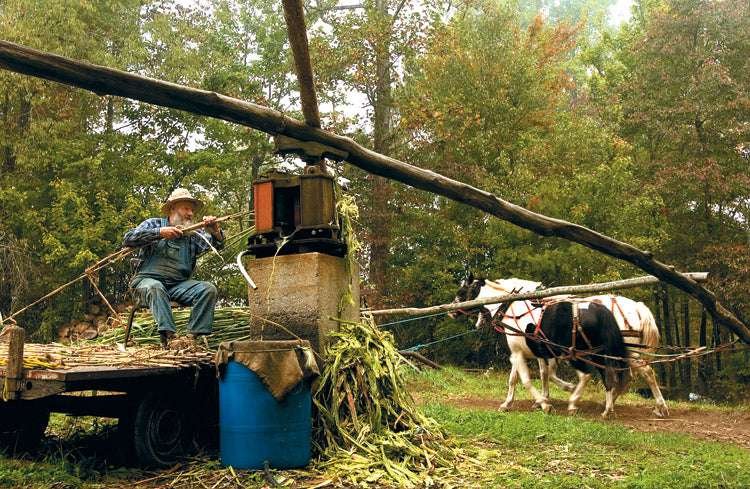
Sorghum syrup was produced from the juice of the sorghum plant, which is extracted from the crushed stalk. The juice would then be boiled to evaporate the water, leaving a syrup behind. The excess stalks were fed to livestock.
Tree syrups were produced by tapping high sugar content sap trees and then boiling the sap to evaporate the water, leaving a syrup. One tree could produce one gallon per day so many trees would be tapped to fill buckets. It would take 40 to 50 gallons to produce one gallon of syrup. Trees providing syrup included maples (sugar maple, red maple, black maple), birches (paper, white, yellow, black, gray), walnuts (white, black, English), and sycamores.
Food Preservation
Preserving food was an absolute necessity before refrigeration. The main forms of food preservation were: root cellars, drying, brining, smoking, sulphur dioxide, pickling, and canning.

Root cellar
Every home had a root cellar to “hole up” vegetables, fruits, nuts, seeds, and oils to preserve them with controlled temperature and humidity. Root cellars would be in underground pits, hillsides, sheds, crawlspaces, or basements. Potatoes would be stored in a deep hole with layers of hay and dirt, with a corn stalk “fodder shock” coned roof. Sweet potatoes would be wrapped separately in paper and kept in wooden barrels. Cabbages could be buried head down over their roots during the winter. The frozen dirt would dehydrate the cabbage which preserved it.

Drying removed water in foods which inhibits bacteria, yeast, and mold. Vegetables, fruits, and grains could be dried through sun drying and air drying. Brining with dry salt or salt water would preserve, cure, and marinate vegetables, meats, fish, and cheese. A smokehouse would be used to smoke and cure meats and fish with smoke from burning wood.
Sulphur dioxide was used to preserve fruits in a barrel. Sulphur would be ignited in a barrel with fruit and then covered to smoulder sulphur dioxide smoke which has antimicrobial properties.
There was a long tradition of canning for preservation of fruits, vegetables, and meats. Canning uses heat and pressure to keep food safe form spoilage in sealed glass jars. Prepared food is spooned into jars that are then sealed and submerged in boiling water to form a vacuum secured lid.
Pickling was another preservation technique. The acidity and salinity of the pickling vinegar and spices kills bacteria and changes the texture and flavor of the food. Popular Appalachian pickled foods include chow chow, beets, crabapples, bread and butter pickles, watermelon rind, rhubarb, horseradish, green beans, cabbage, corn, tomatoes, onions, and others.
Foraging and Hunting
There was a strong tradition of hunting and there was an abundance of many game animals, such as: deer, rabbit, squirrel, turkey, duck, geese, grouse, pheasant, quail, squab, and other wild game. Fresh water fish included catfish, trout, bass, and pickerel, as well as shellfish.

Forest farming and foraging was essential as part of subsistence farming. Wild edible plants gathered included the following.
Fruit: blackberry, strawberry, cranberry, gooseberry, pawpaws, rhubarb, mulberry, huckleberry, crabapples, persimmons, grapes.
Vegetables: ramps, scallion, onion, garlic, watercress, dandelion, leek, yam, sorrel, plantain, pokeweed, day lily, chicory.
Nuts: black walnuts, pecans, acorns, hickory nuts, hazelnuts, chestnuts, butternuts.
Mushrooms: chanterelle, morel, oyster, chicken of the woods, rock tripe.
Wild herbs: rose, wintergreen, peppermint, violet, bee balm, nettle, daisy, mustard, birch, sassafras, ginseng, ginger, sage, thistle, lavender, horseradish, allspice, vanilla, juniper, and others.
Appalachian Recipes
It is said that an Appalachian dinner consisted of pinto beans with smoked pork or fatback, corn bread, fried potatoes, fried cabbage, pickles, and a pie or cake. Menu variations could include pulled pork, pork chops, chicken and dumplings, fried chicken, fried catfish or trout, venison, rabbit, sweet potatoes, grits, greens, duck, pheasant, quail, and grouse. Breakfast was most often biscuits or grits with sausage gravy. Christmas dinners were more extravagant with a ham or turkey.

Roasted Ruffed Grouse (partridge)
My dad and I would hunt pheasant, quail, and grouse. We would have a Sunday feast.
Pick a young grouse to be more tender. Brind in salt water over night. Rub bird in bacon fat or wrap in bacon strips, stuff with apples and onions. Bake at 350 degrees F for 45 to 60 minutes or until done. Baste frequently with fat drippings.
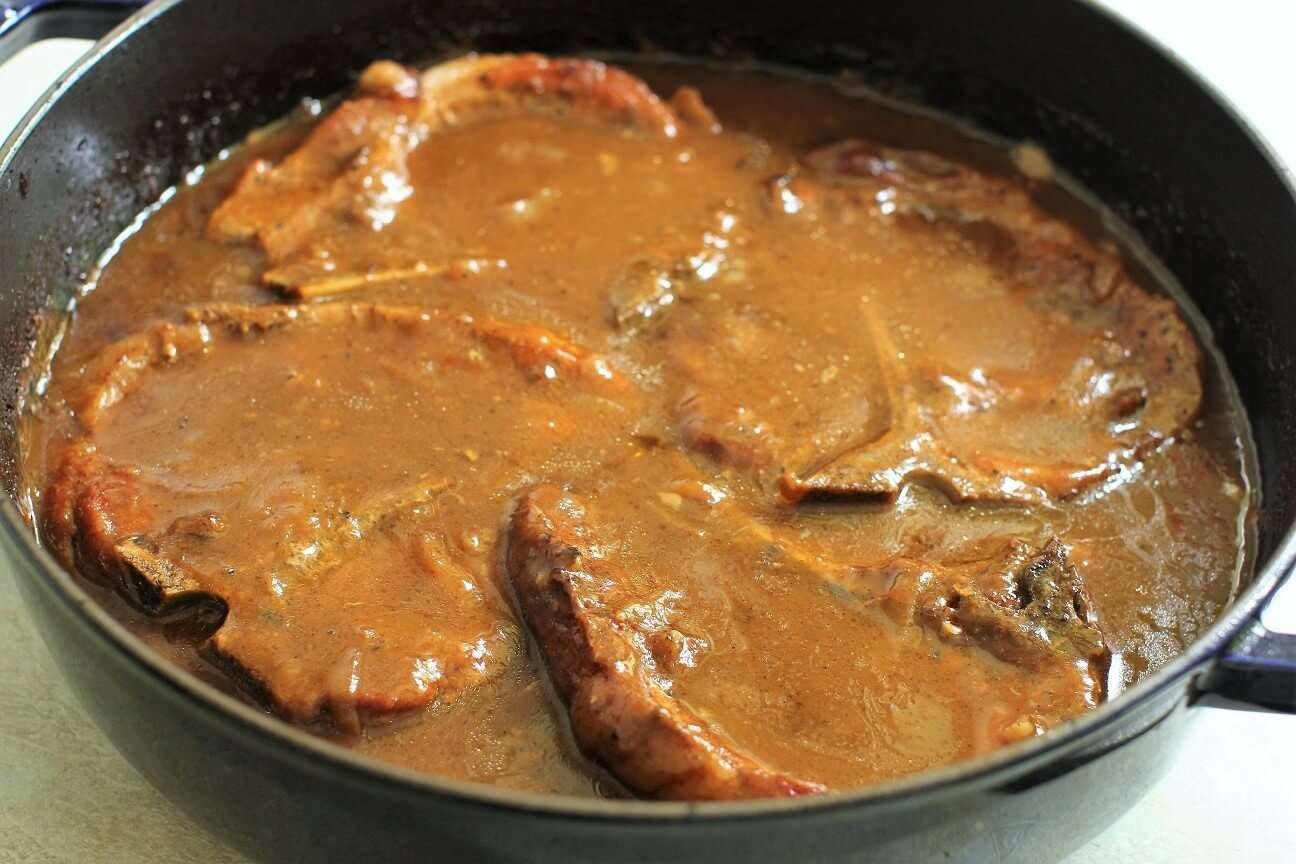
Smothered Pork
We would have this dish quite often.
2 lbs boneless pork country style ribs, pork shoulder sliced into ribs, pork steak, or pork chops
2 onions chopped
2 cloves garlic chopped
2 tsp oil
2 dried thyme leaves
1 tsp dried sage
pinch red pepper flakes
2 tb soy sauce
1 quart chicken broth
1/4 cup cornstarch mixed with 1 1/2 cups water to make a slurry
salt and pepper
Brown pork, onion, garlic, seasonings. Pour in broth and soy sauce. Cover and bake for 45 minutes at 375 degrees F. Remove pork. Stir in slurry to thicken sauce, add back pork, simmer 10 minutes. Serve over noodles, dumplings, rice, or mashed potatoes.

Soup Beans
A true Southern delight. Every home would have a pot of soup beans. Soak dried pinto beans in water overnight, drain in the morning. Put beans and bacon, fatback, or a hamhock in a pot with fresh water. Simmer 4 to 5 hours. Salt and pepper to taste. Onion optional. Served with cornbread.

Corn Pudding
Hard to beat.
2 cups fresh corn
2 eggs
2 tb melted butter
1 pint scalded milk
1 tsp salt
1/8 tsp pepper
Beat eggs and mix with all ingredients. Pour into a greased dish, place dish in another pan of hot water. Bake 1 hour, at 350 degrees F.
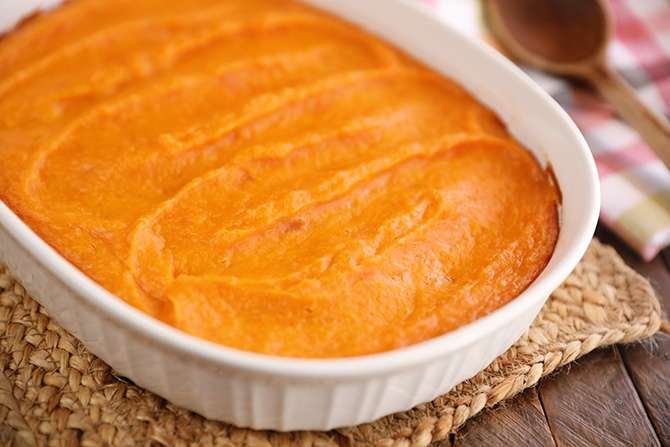
Sweet Potato Pudding
A family staple.
4 cups grated sweet potatoes
1 cup milk
1 cup brown sugar
2 eggs beaten
1/4 cup butter
2 tsp lemon juice
1/4 tsp ginger
1/4 tsp ground clove
1/2 tsp cinnamon
1/2 tsp salt
Combine ingredients, pour into a greased baking dish, bake 30 to 40 minutes or until done, at 350 degrees F.
Wilted Greens
Cut up greens, such as leaf lettuce, romaine, kale, or spinach. Cut up green onions. Pour hot bacon fat over uncooked greens. Salt and pepper to taste.
Fried Cabbage
Shred cabbage, fry in a pan with bacon fat. Salt and pepper to taste, pinch of sugar.

Leather Britches
Excellent with dried, fresh, or frozen green beans. The pork and onion is a must.
2 lb dried green beans (dried on a string)
Fatback, bacon, or hamhock
1 onion diced
Salt and pepper to taste
Soak dried beans 24 hours, drain. Place all ingredients in a pot with water. Simmer 2 to 3 hours. Salt and pepper to taste.
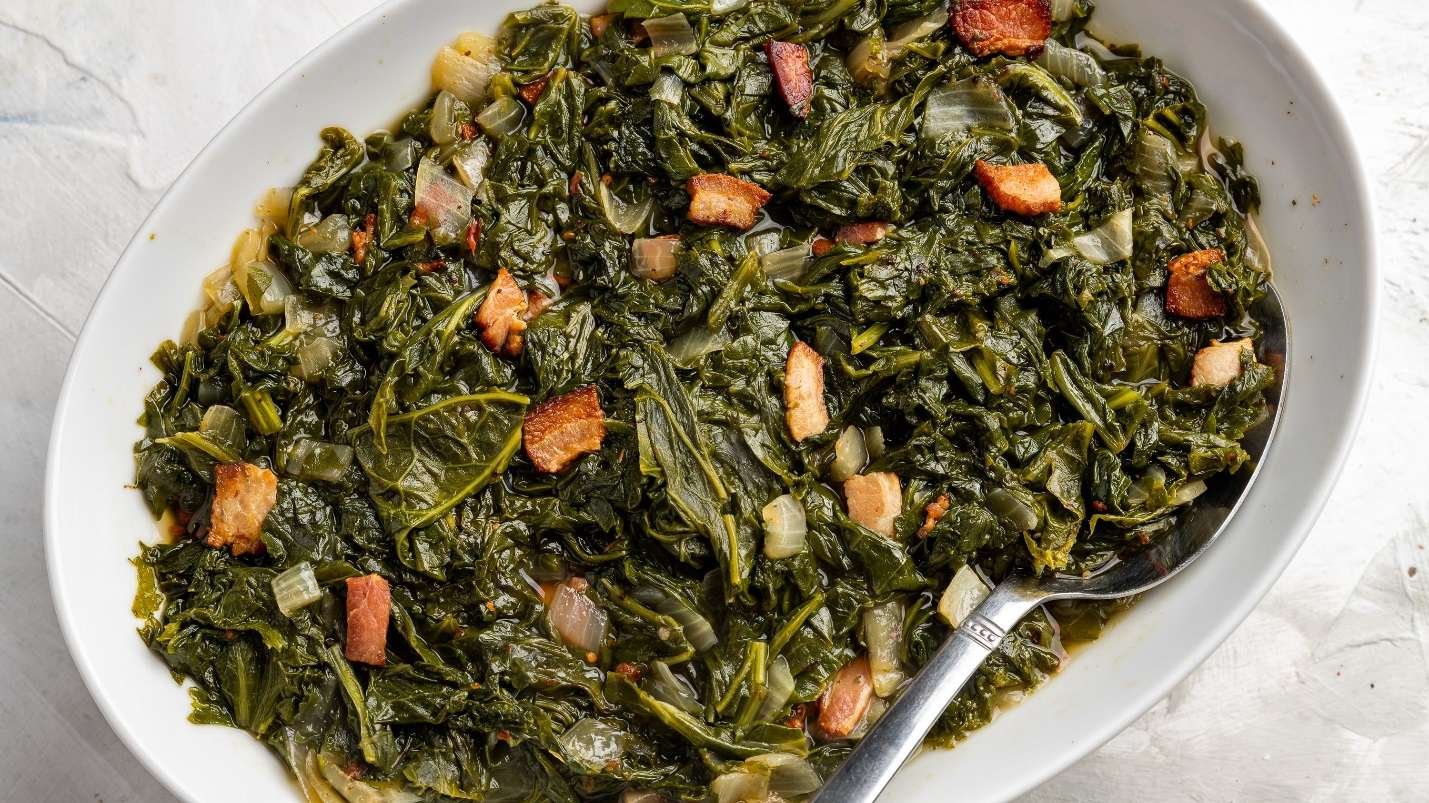
Mustard Greens
A Southern staple. Can use collard greens, turnip greens, kale, spinach, or mix.
2 to 3 bunches of mustard greens
1/4 lb bacon or hamhock
1 onion diced
2 1/2 cup water
Salt and pepper.
Place washed greens in a pot with 1 cup of water, simmer 20 to 30 minutes, drain.
In a large skillet fry meat until browned. Add onions, cook until tender. Add greens and 1 1/2 cup water. Cover and simmer 10 minutes. Add salt and pepper to taste. Cover again, simmer 20 minutes.
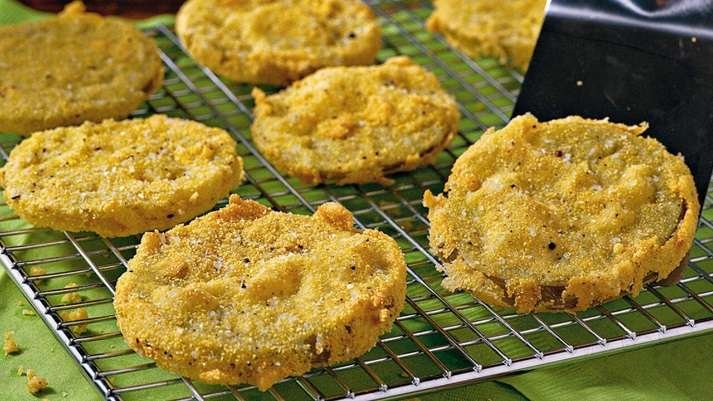
Fried Green Tomatoes
A real old fashioned treat.
4 large green tomatoes, sliced into 1/4 inch
1 cup flour
2 eggs
1/2 cup milk
1/2 cup cornmeal
2 tsp salt
1/4 tsp pepper
Cooking oil
Whisk eggs and milk in a bowl. Mix cornmeal, salt, and pepper on a plate. Dip tomatoes into flour, then dip in the milk-egg mixture, and then dredge in cornmeal. Fry in hot oil until golden brown, drain.
Morel Mushrooms
A true gourmet delicacy.
Large portion of morel mushrooms, split halfway
2 cups cornmeal
2 eggs, beaten
1/2 cup milk
1 pinch salt
1 pinch pepper
1 cup flour
Mix cornmeal, sugar, salt, pepper, set aside. Whisk eggs and milk. Dip morels in flour, then dip in egg- milk mixture, dredge in cornmeal mix. Fry in hot oil in a skillet.

Rhubarb Apple Chutney
My mother made this.
2 cups rhubarb diced
4 cups apples, cored, peeled, diced
1/2 cup dried cranberries
4 cups sugar
1/2 cup water
1 tsp cinnamon
1/2 tsp nutmeg
1 lemon juiced
Combine water, apples, rhubarb, lemon juice, sugar, bring to boil, simmer 15 minutes. Add cranberries, cinnamon, nutmeg, simmer 5 to 10 minutes. Put in jars, seal lids, process in steamed canner. Age for one month.

Apple Butter
My mother made apple butter. We would have it on homemade bread or biscuits.
12 granny smith apples, cored, peeled, quartered
1 1/2 cup sugar
1 tb cinnamon,
1 tsp allspice
1/2 tsp ground clove
1 tsp nutmeg
1 tb lemon juice
1/2 cup apple cider
Combine all in a pot, cover and cook at low heat for 8 to 10 hours. Mush apple mixture. Cook uncovered on low heat for 2 hours. Cool, spoon into jars, refrigerate for 3 weeks.
Tomato Gravy
2 cans of 14.5 oz crushed tomatoes
1 onion chopped
4 tb butter
1 clove garlic minced
1 tsp salt
2 tsp pepper
1 tsp sugar
1/3 cup flour
1 cup chicken broth
1 cup water
1/4 cup heavy cream
Melt butter, saute onion, garlic, salt, pepper, sugar. Stir in flour, add broth, water, stir over low heat to thicken. Add cream, tomatoes, stir until hot.

Wild Strawberry Preserves
My mother would make strawberry and raspberry preserves. We would have it on homemade bread or biscuits. One quart of strawberries (or blackberry, raspberry, gooseberry, mulberry, rhubarb, other). Coat berries in sugar, cover bowl and set overnight at room temperature. Next day, drain juice in a sauce pan, boil, and pour juice over berries, set over night. Second day repeat. Third day boil juice and berries to thicken. Put into jars, seal while hot, let cool.
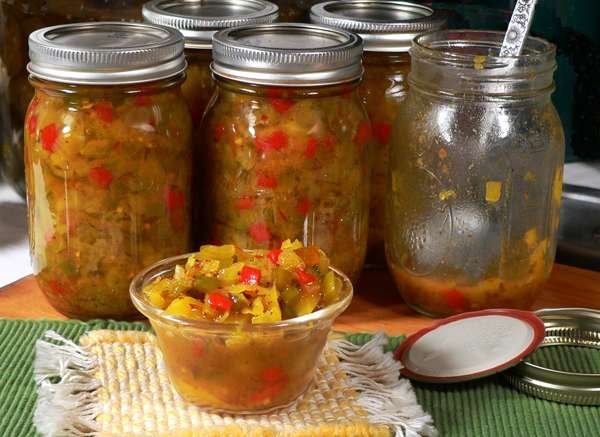
Chow Chow Relish
This is a popular Southern treat.
3 diced bell peppers
1/2 head grated cabbage
1 diced onion
4 diced green tomatoes
1 tb mustard seed
3 cups sugar
5 cups apple cider vinegar
1/2 tsp red pepper flakes
1 tsp ground mustard
1 tb whole cloves
1 tb mustard seeds
1 tb whole black peppercorns
1 bayleaf
2 tb salt
Simmer vinegar, sugar, salt and spice in a pot 5 minutes until sugar dissolves. Add diced vegetables, bring to a boil, reduce heat, simmer 20 minutes. Place into jars, cool, seal. Serve and keep jars in the refrigerator for up to 6 weeks.

Spicy Pickled Beets
My grandmother made the best pickled beets and bread and butter pickles.
3 lbs. fresh beets
2 cups sugar
2 cups water
2 cups apple cider vinegar
2 cinnamon sticks
1 tsp whole cloves
1 tsp whole allspice
Puts spices in a cheesecloth bag. Bring beets to a boil in water, reduce heat, simmer 25 to 35 minutes until tender. Peel and cut beets into quarters, put in a pan with vinegar, spices, and sugar, bring to a boil, reduce heat, simmer 10 minutes, discard spice bag. Place bets in canning jars, add hot liquid over beets, leaving 1/2 inch from lid, tighten lids. Place jars in a canning pot covered, boil 35 minutes. Remove and cool.
Pickled Watermelon Rind
My mother made these.
1 lb watermelon rind cubed, only use white part
2 tb lime (calcium oxide)
2 cups sugar
1 quart water
1/2 lemon, sliced
Soak rind in lime water for 3 ½ hours, drain. Soak in clear water 1 hour, drain. Cover with water, boil 1 ½ hours, drain. Make syrup of sugar and 1 quart water, add rind, boil 1 hour. As it thickens add lemon. Put in jars, top with syrup, seal, cool.
Pickled Crabapples
We had crabapple trees and my mother made these.
2 cups apple cider vinegar
2 cups sugar
10 whole cloves
2 cinnamon sticks
3 lbs firm crabapples, stems intact
Combine vinegar, sugar, spices in a large pot and boil until sugar dissolves. Reduce heat, add apples, cook 5 to 6 minutes. Put apples into jars. Add syrup within 1/2 inch of lid, seal lids. Store in a cool, dark place.
Chicory Coffee
We would make this and mix with coffee to keep costs down in lean times. Dig up and wash chicory root. Dry in the sun then mince dried root. Toast in oven at 350 degrees F until golden brown. Grind to a fine powder. Brew it like coffee. Optional mix with regular coffee.

Mountain Dandelion Wine
A special drink from free dandelions.
1 quart dandelion blossoms, washed
1 gallon boiling water
1 package wine yeast
8 cups sugar
1 orange peeled, sliced
1 lemon juice
Place blossoms in boiling water for 4 minutes, remove and discard. Cool water to 90 degrees F. Stir in yeast, sugar, orange, and lemon juice. Place in a plastic fermenter in a cool place for 3 weeks or when bubbles stop. Siphon and stain though a cheesecloth. Bottle in canning jars with lids. Age for 2 months.

Old Fashioned Root Beer
An old fashioned treat.
1 1/2 gallon of molasses
5 gallons boiling water
Mix, let stand for 3 hours, then add,
1/4 lb. sarsaparilla root
1/4 lb. sassafras bark, bruised
1/4 lb. birch bark (wintergreen flavor)
1/2 pint fresh yeast
Add water to bring mixture up to 16 gallons of total volume. Strain mixture though a cheesecloth. Ferment for 12 hours, then syphon into bottles, leaving an inch from the top. Let it rest at 65 to 75 degrees F for 36 hours. Then see if it is carbonated, if not let it rest for another 12 to 14 hours.
Optional ingredients:
ginger root, 1 tb. per gallon
licorice root, 1 tb. per gallon
star anise, 3 per gallon
cinnamon, 3 sticks per gallon
cloves, 3 per gallon
vanilla bean, 2 per gallon
fresh mint, 2 sprigs per gallon

Mulled Cider
We would make this at Christmas time, heated up in a crock pot.
2 quarts apple cider
20 whole cloves
1/2 cup sugar
20 cinnamon sticks
14 whole allspice
1/4 tsp. salt
Boil for 15 minutes and let stand for 12 hours. A crock pot can be used.

Herbal Teas
There are numerous herbs that were used for tea. Lemon and honey may be added.
Tea can be mixed to develop one’s ‘perfect’ brew.
Rose petal tea: simmer petals in a large pot. Remove pot and let it sit overnight. Strain.
Chamomile tea: boil flowers in water. Mint leaves and lavender flowers are optional.
Strawberry tea: steep dried strawberry leaves with hot water.
A few other teas include: bee balm, catnip, burdock, sage, violet, sassafras, dandelion, mint, raspberry, and many others.

Raspbery Rhubarb Pie
My grandmother grew rhubarb and raspberies. She would make the best pies using real lard in the crust.
3 cups rhubarb cut up
3 cups raspberries
6 tb butter, melted
1 1/2 cups sugar
1/2 cup flour
pie shell and top crust
Mix ingredients in a bowl, spoon into pie crust, place top pie crust, brush butter on top crust, cut small holes on the top pie crust. Bake 30 mintes at 350 dgress F, cover in foil, bake for anothr 40 to 50 minutes until filling is bubbling. Remove and cool fo 1 to 3 hours.

Pawpaw Crustard Pecan Pie
Pawpaws are a sweet fruit that grows wild.
1 1/2 cups pawpaw pulp (peeled and seeded)
1 cup pecan halves
1 cup sugar
2 eggs beaten
1/2 cup milk
1/2 cup heavy cream
1/4 tsp salt
1 deep pie crust
Mix all ingedients, except pecans, in a sauce pan, cook over median heat for 10 minutes to thicken. Pour into a pie shell, cover with pecans. Bake 30 to 40 minutes at 350 degrees F until crust is golden brown.
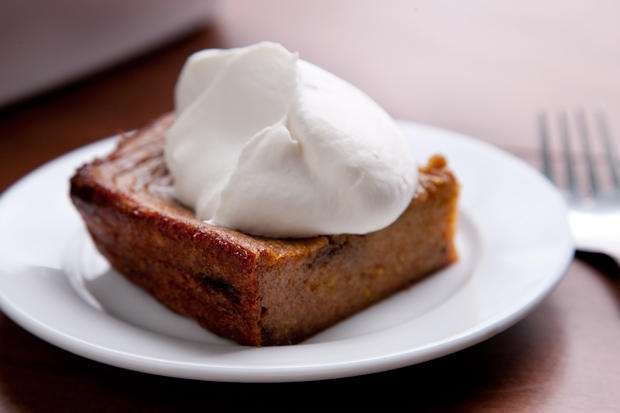
Persimmon Pudding with Nutmeg Sauce
An old treat.
1/2 cups butter
1 cup sugar
½ cup honey
2 eggs
2 cups pesimmon pulp
2 cups flour
2 tsp baking powder
1/4 tsp baking soda
1/4 tsp salt
2 tsp cinnnamon
1/2 cup chopped black walnuts
nutmeg sauce
Cream together butter, sugar, honey, eggs. Blend in persimmons pulp, set aside. Sift together flour, baking powder, baking soda, salt, cinnamon. Combine with creamed mixture, add in walnuts, spoon into a baking dish. Bake 1 hour at 350 degrees F. Serve with nutmeg sauce and whipped cream.
Nutmeg Sauce
1 tb butter
1 1/2 cups water
1 1/2 cups sugar
1/2 tsp nutmeg
2 tb cornstarch
2 tsp vanilla
Combine in small saucepan, cook over low heat until thickened.
Sources:
- Dusty Old Things online
- Mountain Laurel online
- Palatable Pastime online
- Taste of Home online
- Wide Open Spaces online
Cook Books
- Appalachian Mountain Cookbook, Laura Sommers, 2020.
- Appalachian Cooking, John Tullock, Countryman, 2018.
- Edible Wild Plants, Thomas S. Elias and Peter AA. Dykeman, Sterling, NY, 1982.
- Foxfire Book of Appalachian Cookery, T.J. Smith, University of North Carolina, 1984.
- Row By Row: Talking With Kentucky Gardeners, Katherine J. Black, Swallow, 2015.
- Victuals: An Appalachian Journey With Recipes, Ronni Lundy, Clarkson, 2016.



